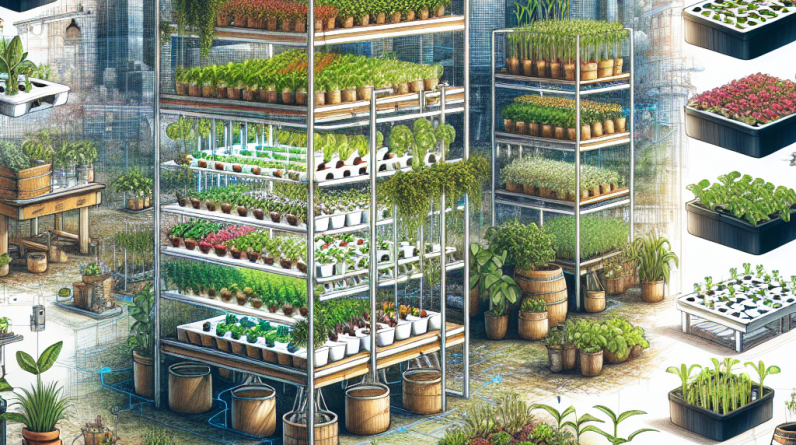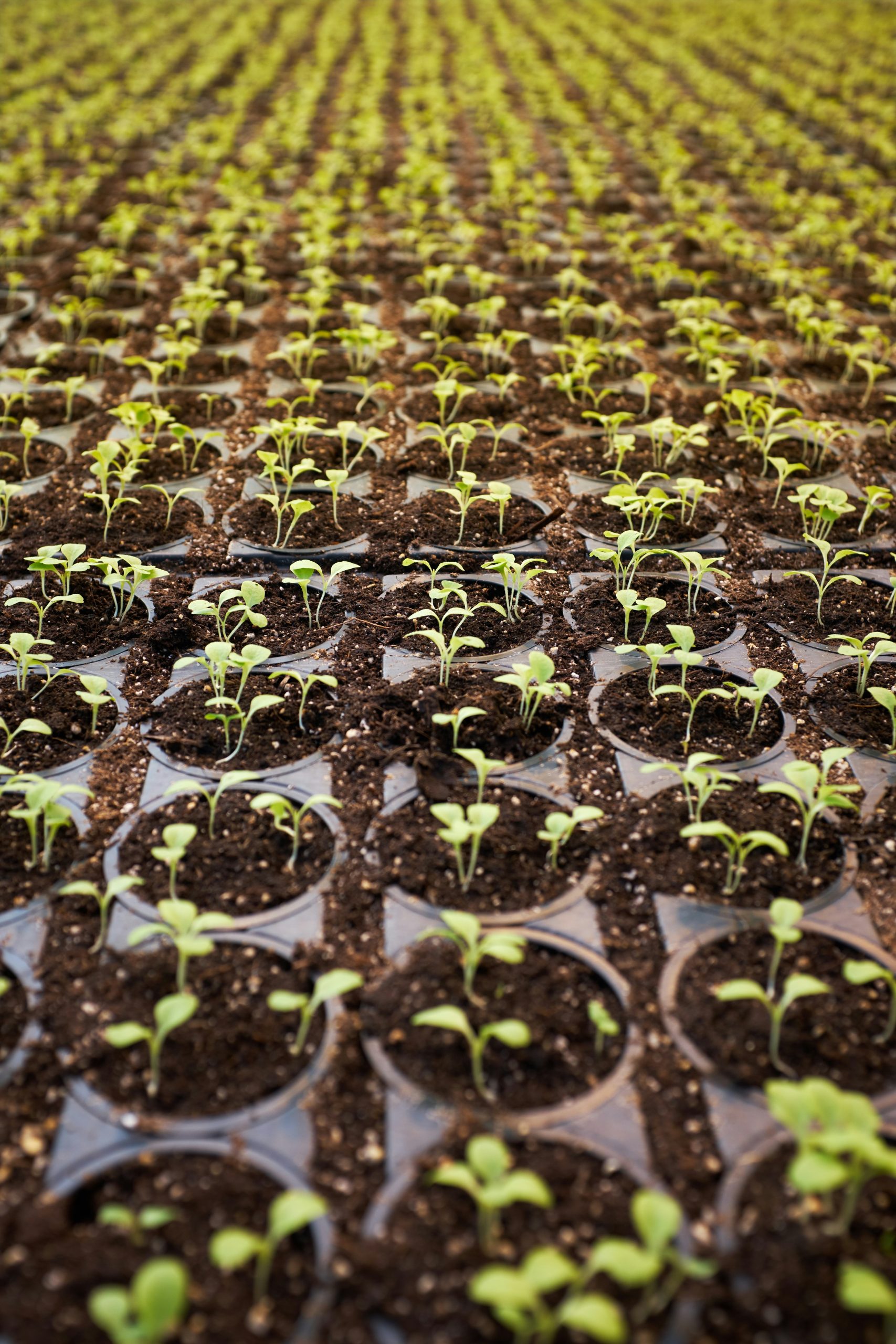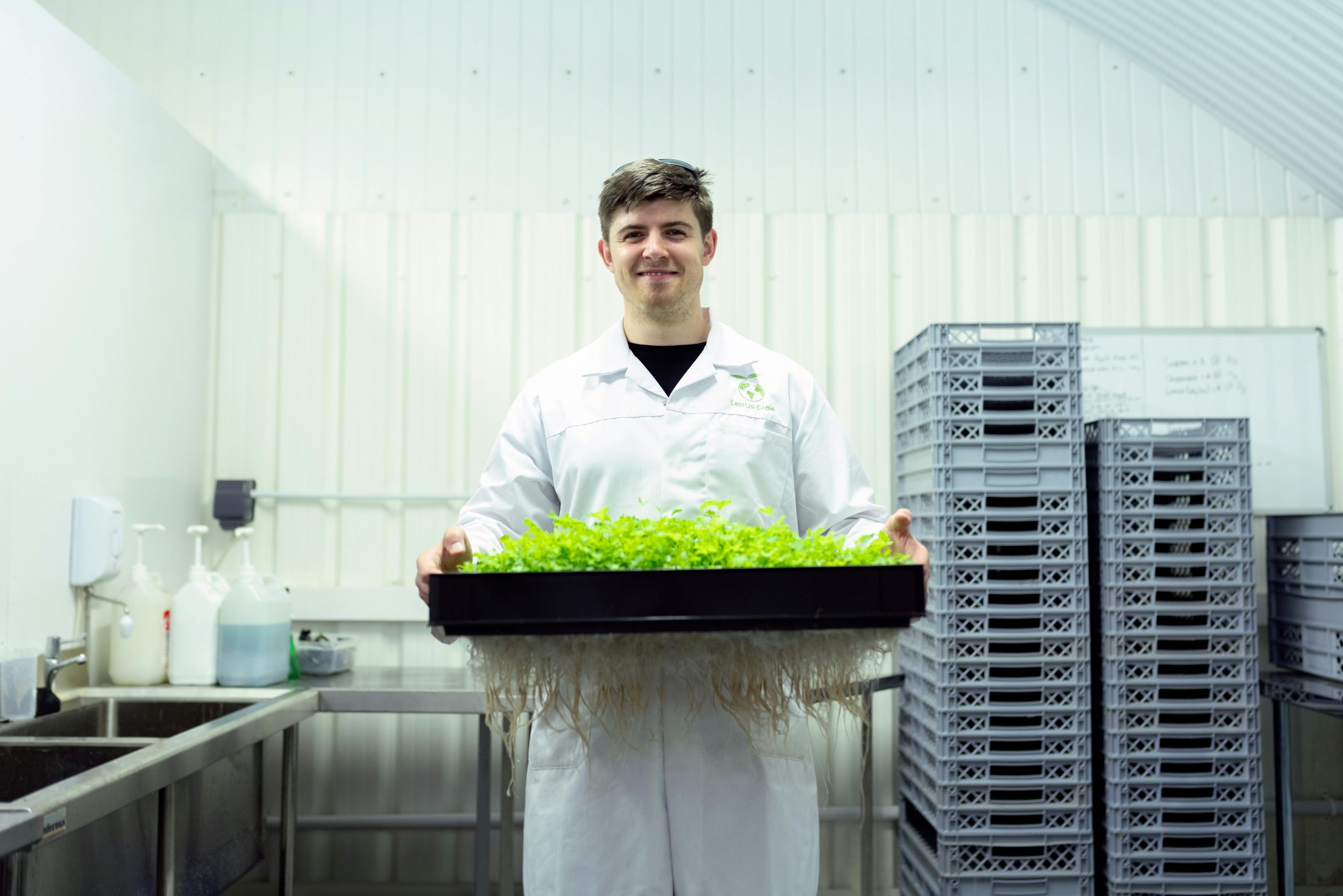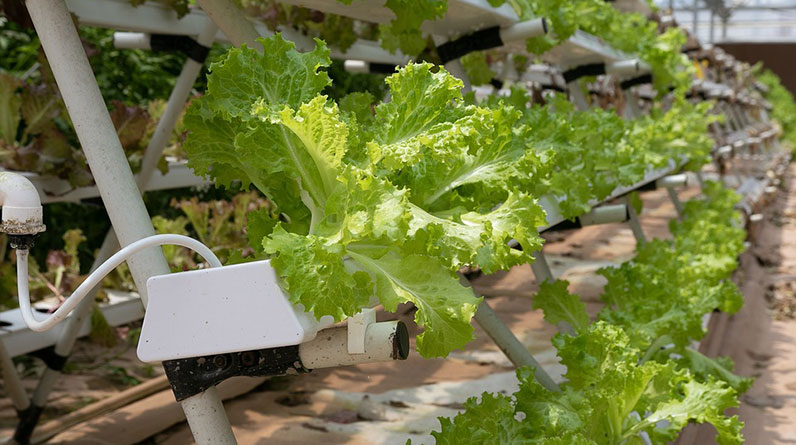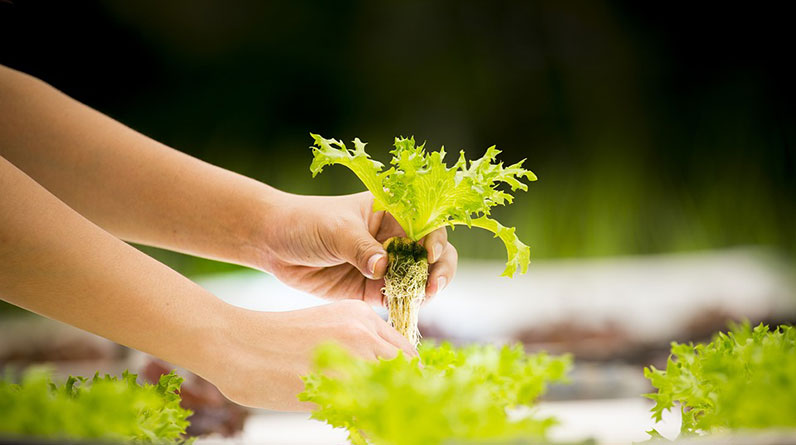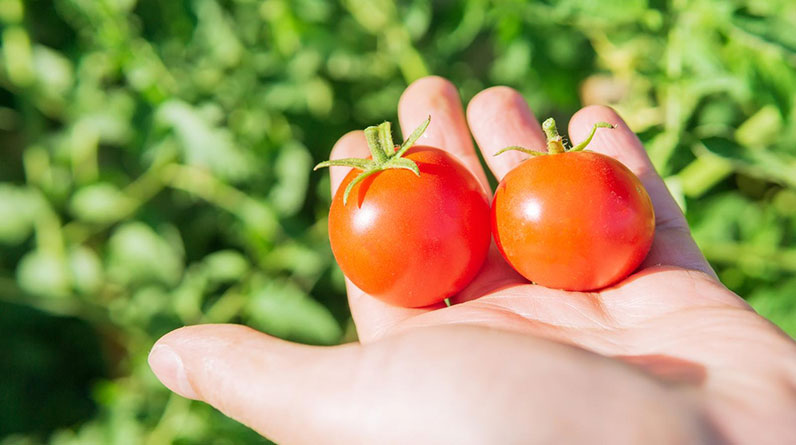
1. Combining Aquaponics with Hydroponic Systems
Harnessing Symbiotic Relationships for Better Yields
One of the most innovative hydroponic garden ideas for 2025 is integrating aquaponics with hydroponic systems. This method creates a natural ecosystem where fish waste provides nutrients for the plants, and in turn, plants clean the water for fish. Itâs a sustainable approach that reduces the need for synthetic fertilizers, making your garden eco-friendly and resource-efficient.
From personal experience, combining aquaponics with hydroponics has resulted in higher crop yields and healthier plants. Plus, maintaining a balanced system encourages microbial activity, which further promotes plant growth. For those interested in sustainable gardening practices, this idea is both practical and environmentally responsible.
Research shows that aquaponic-hydroponic systems can produce 25-50% higher yields compared to traditional soil gardening, especially when properly managed. This setup is perfect for urban farmers and hobbyists aiming for a thriving setup in 2025.
Design Tips for Success
When designing your aquaponic-hydroponic system, consider the size of your fish tanks and plant beds. Balancing the number of fish with plant demand helps maintain water quality and nutrient balance. Automated monitoring systems can help track pH, ammonia, and nutrient levels, ensuring your system remains optimized.
Start small if you’re new to aquaponics, expanding gradually as you learn the nuances of fish and plant health management. For aspiring hydroponic garden ideas, adopting an aquaponic element can significantly elevate your gardening game in 2025.
2. Vertical Hydroponic Gardens for Space Efficiency
Maximizing Small Spaces with Vertical Designs
Vertical hydroponic gardens are one of the top hydroponic garden ideas for 2025, especially for urban environments with limited space. These systems stack plants vertically, making use of wall-mounted or multi-tiered setups. Not only do they save space, but they also improve light exposure and air circulation around plants.
Personally, Iâve found that vertical gardens are easier to maintain because of better plant organization. They also create eye-catching green walls that add aesthetic value to any indoor or outdoor area. You can grow herbs, leafy greens, strawberries, and even small vegetables efficiently in vertical arrangements.
Research indicates that vertical hydroponic systems can increase productivity per square foot by up to 300%. This makes them an ideal choice for 2025 gardeners looking to maximize output while minimizing footprint.
Implementation Tips
To implement a successful vertical hydroponic garden, choose lightweight materials and ensure proper water flow. Drip or NFT (nutrient film technique) systems work well in vertical setups. Lighting is also crucial, so incorporate grow lights to ensure optimal photosynthesis.
Automation through timers and sensors can help manage water levels and nutrient concentration, reducing manual work. Experimenting with different configurations can lead to innovative garden designs perfect for 2025âs trends.
3. Wicking Hydroponic Trays for Easy Maintenance
How Wicking Systems Simplify Hydroponic Gardening
Wicking hydroponic trays are an excellent hydroponic garden idea for beginners and busy growers. These systems use capillary action to pull water and nutrients from a reservoir up into the growing medium, providing plants with a steady supply of moisture.
What I love about wicking trays is their minimal setup and maintenance. They donât require pumps or complicated plumbing, making them a cost-effective option for small-scale gardens. Plus, they are highly resilient to power outages, keeping your crops safe in all conditions.
Research and practical testing show that wicking hydroponics can support healthy tomato, lettuce, and herb growth, making them suitable for a variety of crops in 2025.
Practical Tips for Wicking Gardens
Ensure the growing medium is capable of wicking water efficientlyâmaterials like coconut coir or vermiculite work well. Regularly checking water levels in the reservoir prevents drought stress, especially during hot weather.
You can scale wicking systems easily by adding more trays or modifying their size. Pairing this idea with DIY efforts can bring your hydroponic garden ideas to life with minimal cost and maximum satisfaction.
4. DIY Hydroponic Kits for Beginners
Getting Started with Homemade Hydroponics
One of the most popular hydroponic garden ideas for 2025 is building your own DIY hydroponic kits. These kits are perfect for newcomers or anyone looking to experiment without investing heavily upfront. You can customize your system based on available space, budget, and crop preferences.
From my experience, assembling a DIY hydroponic system fosters a deeper understanding of how nutrient delivery works. Plus, it makes troubleshooting easier because youâre familiar with every component involved. Using simple components like plastic containers, a small pump, and net pots, you can create a functional hydroponic garden.
Studies confirm that DIY systems can be highly productive and fun, encouraging more people to embrace hydroponics as a sustainable gardening method in 2025.
Step-by-step Setup Tips
Start with a clear planâdecide what you want to grow and available space. Choose beginner-friendly crops like lettuce, herbs, or small peppers. Select easy-to-find materials and follow online tutorials for assembly and maintenance.
Automation, like timers for pumps and lights, can be added gradually to optimize growth without extra effort. This flexible approach to hydroponic garden ideas ensures successful harvests and enjoyment in 2025.
5. Autonomous Hydroponic Aquaponic Systems
Creating Self-Sustaining Gardens
Imagine a hydroponic garden that practically manages itselfâthatâs the promise of autonomous aquaponic systems. These advanced setups incorporate sensors, automated dosing, and smart controls to maintain optimal conditions with minimal human intervention. For 2025, this is one of the most innovative hydroponic garden ideas.
In the real world, fully automated systems save time and reduce errors, making hydroponics accessible even for busy urban dwellers. They also ensure consistent nutrient levels and environmental conditions, leading to healthier plants and better yields.
Recent technological advancements in IoT (Internet of Things) devices mean that you can monitor your garden remotely via smartphone, receiving alerts and adjusting settings as needed. This level of automation is growing rapidly and becoming a staple in modern hydroponic gardening.
Implementation and Benefits
To implement an autonomous system, start with smart sensors for pH, water level, and temperature. Use an automated pump and dosing system for nutrients. Integrate these components with a control platform to enable remote monitoring and adjustments.
The primary benefit is achieving consistent, high-quality production with less manual effort. These systems are especially suitable for 2025, where time-saving solutions are highly valued in hydroponic garden ideas.
6. Automated Watering & Nutrient Delivery
Why Automation Matters in Hydroponics
Automation of watering and nutrient delivery is another key hydroponic garden idea for 2025. It ensures plants receive the right amount of water and nutrients at the right time, improving growth rates and reducing waste. Automated systems can be programmed using timers, sensors, or AI-based controls.
From practical experience, automation minimizes human error and maximizes plant health. Itâs especially beneficial for larger systems or for growers who want to optimize their harvests without constant manual oversight.
Statistics show that automated hydroponic setups can increase efficiency by up to 30%, which is compelling for commercial growers and hobbyists alike.
Technical Tips for Implementation
Use timers and sensors to control watering cyclesâthink about soil moisture sensors adapted for hydroponic media. Ensure your nutrient delivery system is adjustable and capable of mixing with water accurately.
Regularly calibrate sensors and check system components for blockages or leaks. Automation can truly transform your hydroponic garden ideas into a highly productive, stress-free setup in 2025.
7. Advanced Light Solutions for Optimal Growth
Innovative Lighting Technologies
Lighting is crucial in hydroponic gardening, especially indoors. For 2025, the trend is toward advanced LED systems with customizable spectrums, brightness, and dimming options. These lights can simulate natural sunlight at different times of day, promoting healthy, vigorous plant growth.
From personal experimentation, Iâve noticed that adjustable LED grow lights significantly improve crop yields and crop quality. They also help extend growing seasons, which is a game-changer for urban farmers and hobby growers.
Research indicates that full-spectrum LED grow lights can increase photosynthesis efficiency by up to 30% compared to traditional lighting, a big advantage in a data-driven hydroponic setup for 2025.
Best Practices for Using Grow Lights
Position your lights appropriatelyâgenerally 12-18 inches above plantsâand use programmable timers. Adjust light intensity based on plant growth stage, providing more light during flowering and fruiting phases.
Investing in smart lighting systems with remote control and automation capabilities ensures your hydroponic garden ideas are fully optimized for 2025 success.
8. Organic Fertilizers & Natural Grow Boosters
Enhancing Growth Naturally
Using organic fertilizers is a key component of modern hydroponic garden ideas in 2025. These include compost teas, fish emulsions, and seaweed extracts, which promote healthy microbial activity and protect against pests and diseases.
From practical experience, organic nutrients improve plant resilience and flavor profiles. They also align with sustainable practices, which are increasingly important for eco-conscious gardeners.
Data indicates that organic hydroponic solutions can improve nutrient uptake efficiency and reduce chemical runoff, making them better for the environment and your plants.
Implementing Organic Solutions
Choose organic products compatible with hydroponic systems, and experiment with homemade brews. Regularly monitor plant health and adjust nutrient formulas accordingly. Incorporate beneficial microbes to boost nutrient absorption and plant immunity.
Incorporating organic fertilizers into your hydroponic garden ideas will lead to healthier, tastier crops in 2025, meeting the demand for sustainable produce.
9. Smart Monitoring and Control Technologies
Integrating Data-Driven Gardening
Smart technology is revolutionizing hydroponic gardening. IoT sensors, apps, and control systems make it easier than ever to monitor pH, EC, temperature, humidity, and light levels in real time. This integration makes hydroponic garden ideas smarter and more efficient in 2025.
My own setup uses remote monitoring to keep an eye on my plants from anywhere, adjusting nutrient concentrations or lighting based on data analytics. This minimizes waste and maximizes productivity.
Research shows that smart control systems can reduce resource consumption by up to 20%, making them an essential part of high-tech hydroponic setups in 2025.
Tips for Optimization
Start with reliable sensors and a central control hub. Use alerts and automation rules to respond immediately to any unfavorable changes. Combining automation with data analysis means your hydroponic garden ideas become not just productive but also cutting-edge.
10. Unconventional & Innovative Hydroponic Crops
Thinking Outside the Box in 2025
While leafy greens and herbs remain popular, exploring unconventional crops is a major hydroponic garden ideas trend for 2025. Consider growing medicinal plants, exotic fruits, or gourmet mushrooms hydroponically to diversify your harvest and add value.
For example, hydroponic strawberries, heirloom tomatoes, and specialty herbs like basil and cilantro are in high demand in gourmet cooking. You can also experiment with more novel crops like edible flowers or microgreens, which grow quickly and with high nutritional content.
Studies suggest that diversifying crops using hydroponics can increase profitability and resilience, especially in urban settings with limited land. Experimentation is key to staying ahead in the hydroponic scene of 2025.
Getting Creative with Crops
Start small by testing different varieties indoors. Track growth parameters and market demand, then scale successful crops. Incorporating new, exciting crops into your hydroponic garden ideas can yield both culinary and commercial success in 2025.
Frequently Asked Questions about Hydroponic Garden Ideas for 2025
1. What are the best hydroponic garden ideas for small spaces in 2025?
Vertical gardens, wicking beds, and DIY modular systems are excellent options for small spaces. They maximize productivity while occupying minimal floor area.
2. How can I make my hydroponic garden more sustainable in 2025?
Incorporate organic fertilizers, automate water recycling, and opt for renewable energy sources like solar-powered


